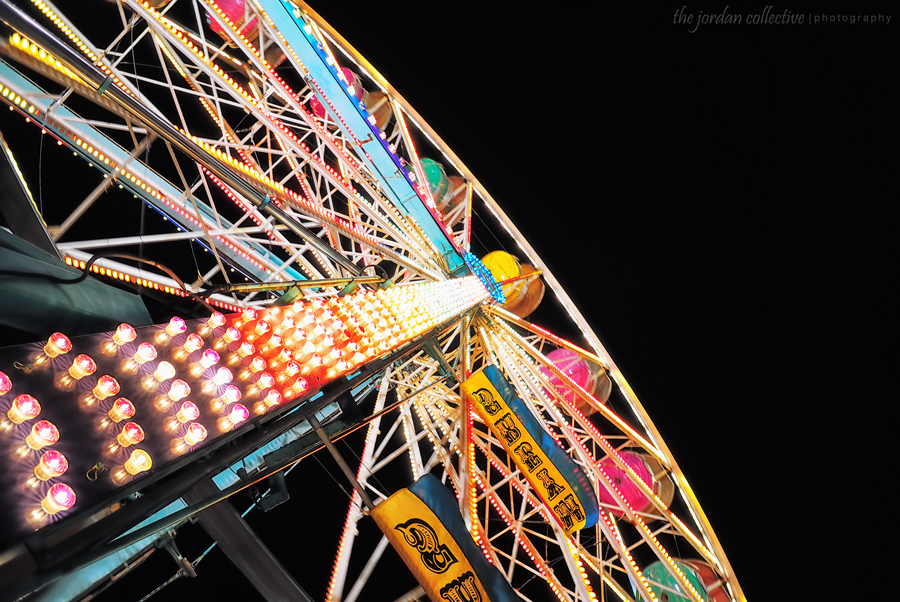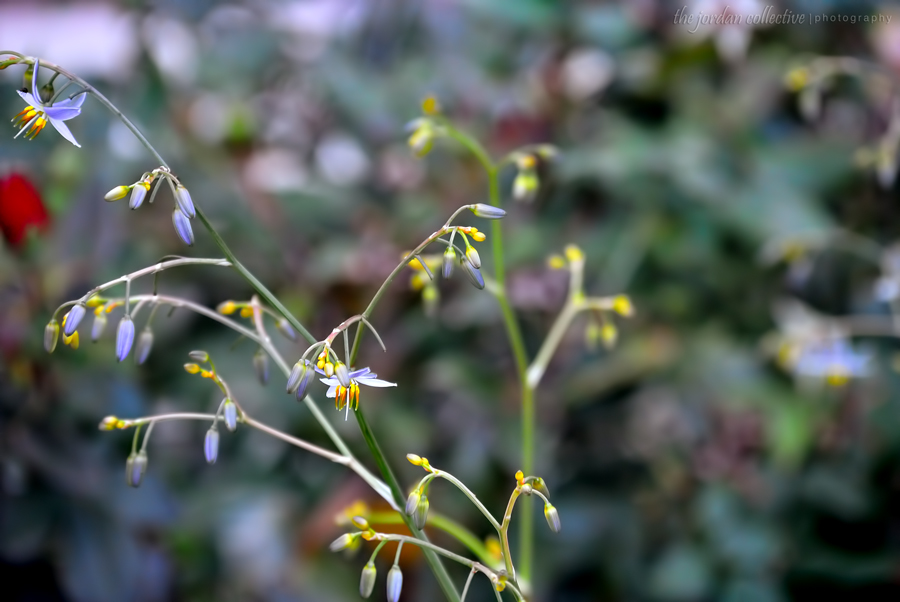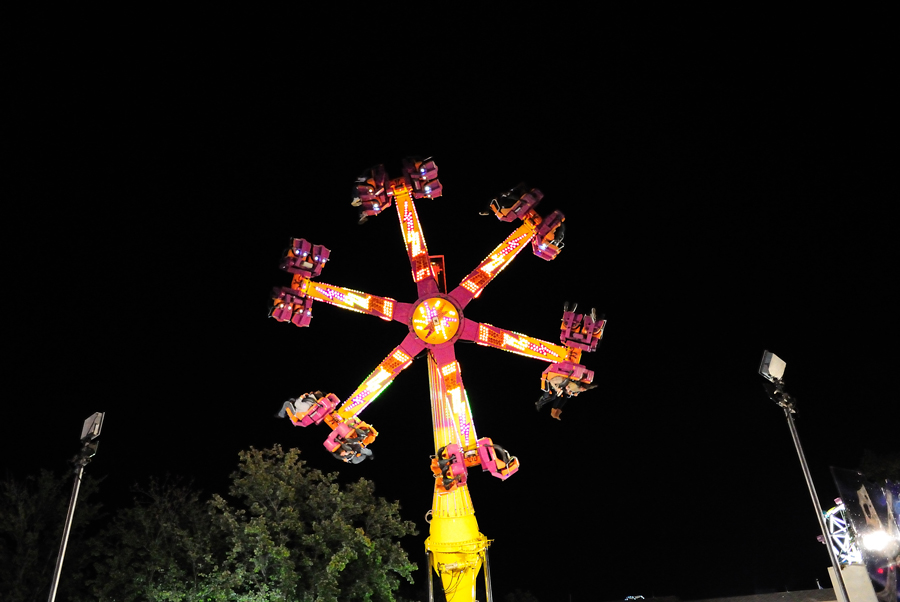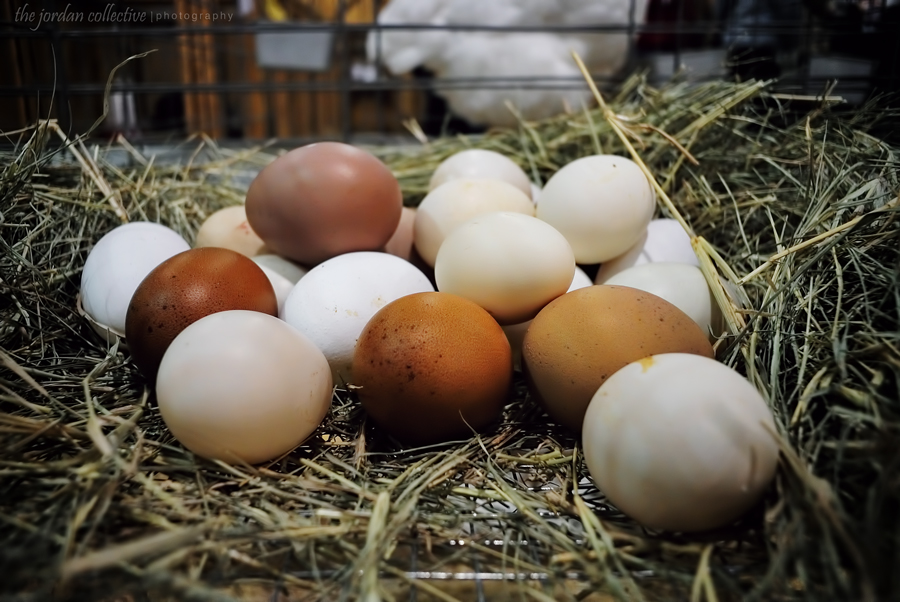The Nikon 1 system: A [NR] hands-on review by Cary Jordan
The Nikon 1 system might be one of the most talked about interchangeable lens systems in Nikon’s history. While it was built as a new system from the ground-up, it’s been surrounded with controversy, speculation and even pure hatred. Now that the Nikon 1 system has been released and is in the hands of photographers around the world, it seems a lot of the speculation and hatred was completely unfounded and was based solely on the unknown (I admit, I am was a skeptic as well) and Nikon’s choice to build the system around the newly Nikon designed CX format (13.2mm x 8.8mm, 2.7x crop factor) 10.1 MP CMOS sensor. Nikon’s reasoning for the Nikon 1 design is now clear and actually quite brilliant, considering the 1’s target market. While the Nikon 1 represents major technological advancements the photography world has never before seen, it’s not without its flaws (although, very few indeed).In this article, we will present to you the Nikon 1 system, in all its glory and its faults. As icing on the cake, we will pit the Nikon V1 against one of its main competitors, the µ 4/3rds Olympus PEN EP-3 (the comparison will be coming online few hours after this post).
In this article, we tested the Nikon V1 (kit price $846.95), Nikon 1-Nikkor 10mm f/2.8 pancake ($246.95), Nikon 1-Nikkor VR 10-30mm f/3.5-5.6 and the Nikon 1-Nikkor VR 10-100 f/4.5-5.6 PD-Zoom ($746.95). We will break the article up into four main categories, one for each piece of equipment. Each category will be broken-down into the appropriate sub-categories that pertain to each item. At the end of the article, we will present sample images taken with the system. The first set of images are presented straight out of the camera (JPEG Fine) with ZERO post-processing. We will also provide separate sample images that have been post-processed from the V1’s NEF files to show how the Nikon V1’s RAW files fair in professional post-processing. In a separate post we will show comparison images and videos with the Olympus PEN EP-3 w/ 17mm f/2.8 pancake lens.
Sample images below were edited from a V1 RAW file:

Nikon 1 V1 | Nikon 1-Nikkor 10-100mm VR f/4.5-5.6 PD-ZOOM @ 52.8mm | 1/200th sec | f/5.6 | ISO-100 | edited from RAW
Nikon V1
V1 Build Quality/Ergonomics
The Nikon 1 V1 is built very well. It features a magnesium alloy body that is very sturdy and confident in the photographers hands. It is small, but not “too” small. Its size is on the lower end of usability; any smaller and it would not be easy to use and would be awkward with larger lenses. I found its size and build to be just about perfect. It easily slips into a jacket pocket or briefcase with the 1-Nikkor 10mm f/2.8 pancake lens attached. The only limiting factor in it’s size is the electronic viewfinder (EVF). The EVF protrudes from the rear of the camera just over a 1/4 of an inch and raises from the top of the camera exactly a 1/4 inch. While this protrusion isn’t very large at all, it can make the camera difficult to slip into your pants pocket due to the extra depth (front-to-back). The Nikon 1 J1 would be a better candidate if you absolutely need the smallest and slimmest package and don’t mind forgoing the excellent EVF. The controls are all laid out well, but lack the control a professional would prefer. Although that might be an issue for a lot of professional photographers, it is not an issue for the Nikon 1’s current target market. Even as a professional photographer, I don’t mind its sleek and simple physical interface. For a compact interchangeable lens system, it just needs to be small, fast, reliable, chic and have excellent image quality; this is all the target market really cares about and is exactly what the Nikon 1 offers. Beyond those limitations, the Nikon 1 V1 has just the right amount of physical controls to take great pictures and video footage, easily. The lay-user will have ZERO issues getting great images from this camera. It does most of the thinking for you, if you allow it. AF Focus mode(AF-A, AF-S, AF-C, MF), AE/AF-Lock, Self-Timer (should be buried in the menu and replaced with metering or ISO control), Exposure Compensation, Mode Dial (Motion Snapshot, Smart Photo Selector, Still Image mode, Movie mode), Playback/Zoom/Thumbnail Control, Shutter Release/Movie Record Release and Display mode are physically accessible on the body. Other important modes are only accessible through the menu system. The menu system is very simple and intuitive. If you’re familiar with Nikon’s GUI interface, you’ll be right at home with the Nikon 1. The menu system is a stripped-down, simplified and cleaner version of the GUI used in all Nikon’s DSLR cameras. You can still access the PASM shooting modes, but there is no dedicated dial/button for its selection. You’ll need to go into the menu to select the shooting modes – but they are never more than two simple clicks and some spins of the command wheel away. Because the menu cursor stays where you’ve left it, I’ve learned to always keep the menu cursor on the shooting menu to keep this selection close-at-hand. Another reason to keep the shooting menu always at-the-ready: to easily reach and manipulate other important modes such as Metering, Image Quality/Size, WB, ISO Sensitivity, Picture Control, D-Lighting and AF-area Modes.
Nikon V1 dimensions/weight:
- 4.4 x 3.0 x 1.7 in. (113 x 76 x 44 mm)
- Approx. 383 g/13.5 oz with battery and memory card but without body cap; approx. 294 g/10.4 oz (camera body only)
NOTE: The Nikon 1 J1 features an aluminum alloy body as opposed to the V1’s magnesium alloy body.
Sample image below was edited from a V1 RAW file:
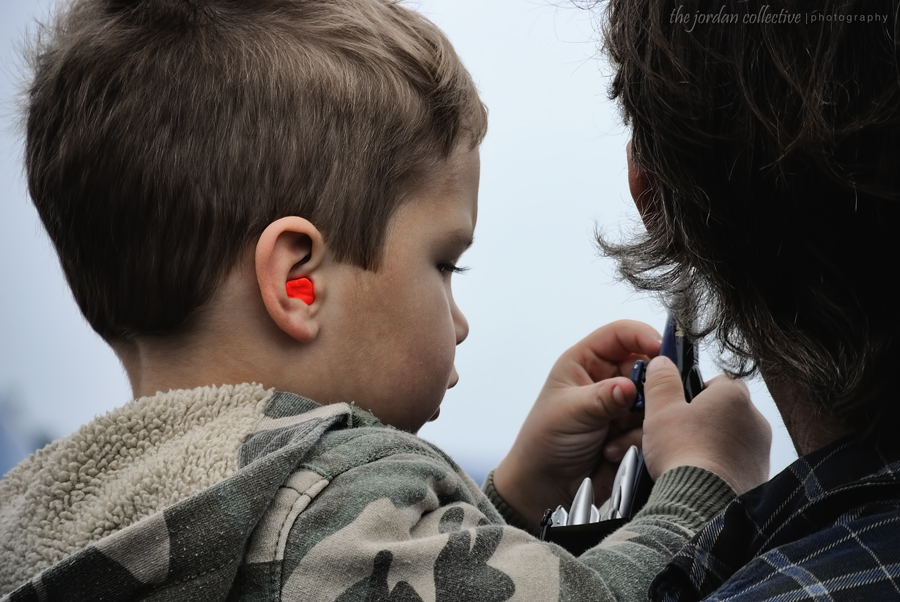
Nikon 1 V1 | Nikon 1-Nikkor 10-100mm VR 4.5-5.6 PD-ZOOM @100mm | 1/250th sec | f/5.6 |SO-140 | edited from RAW
V1 Mechanical Performance
a. Auto Focus/ Auto focus modes
With the Nikon V1 (kit price $846.95) came the ability to have Contrast-Detection AF and Phase-Detection AF on sensor, in a hybrid system. This “world’s first” achievement is what allows the Nikon V1 to feature one of the fastest and most precise AF systems on the planet. It is blazingly fast and insanely accurate – it makes my beloved D700/D3s Multi-Cam 3500FX AF system blush. It has 135 focus points in Single-point AF and 41 focus points in Auto-area AF mode. Because it features Contrast-Detection AF (CD AF) and Phase-Detection AF (PD AF) on sensor, there is no need to calibrate (AF Fine-tune) the PD AF system, like you would in a DSLR. The camera also has the ability to focus with the same speed and accuracy in D-Movie mode. The AF system on the Nikon 1 is one of its biggest strengths and is extremely impressive, even when compared to any professional DSLR camera. Nikon’s AF systems are recognized worldwide to be industry leaders and the Nikon V1 and J1 are no departure; they are the culmination of many years of Auto Focus research/development and deployment in the professional and pro-sumer camera markets. Expect to see these AF advancements refined and improved in the future and to be featured in future Nikon DSLR bodies – this is why the Nikon 1 is such an important system for Nikon, Nikon’s professional photographers, Nikon’s consumer users and Nikon enthusiasts.
The Nikon 1 has 3 AF Area modes and 4 AF drive modes and features AF face-priority (accessible only in the menu system): AF Area Modes:
- Auto-area • The camera selects the auto focus points automatically using the available 41 focus points
- Single-point • The camera only focuses with the single focus point the user selects from the available 135 focus points
- Subject tracking • The camera will follow a target the user selects
AF Drive Modes:
- AF-A • Auto focus automatically selects the appropriate drive mode
- AF-S • Auto focus operates in the AF single-servo mode.
- AF-C • Auto focus operates in the AF continuous-servo mode
- MF • Auto focus is disabled, enabling the user to manual focus the lens using the command wheel on the back the camera
b.Overall speed/Responsiveness
The Nikon 1 V1 is FAST, every command is met with unrelenting eagerness. The camera has a lot of pure processing power and RAM (1gb DDR2, to be exact) that allows it to jump at any and all commands thrown at it. It laughs at simple commands such as menu commands, scrolling through images, deleting images, zooming in and out in previews…etc. Its power is reserved for its stupid-crazy continuous shooting speeds, blazingly fast AF system and high frame-rate video modes. This camera never stutters or hang’s up in anything it does. The Nikon 1 features the new Nikon EXPEED 3 digital image processing engine, with dual image processors. EXPEED 3 is the latest iteration of Nikon’s renowned EXPEED digital image processing engine. This processor engine coupled with a massive amount of RAM (for a camera) is the reason for the Nikon 1’s AF speed, overall responsiveness, crazy frame rates/burst rates and most importantly, image quality. While the V1 is generally very fast, I have found a few flaws in responsiveness.
The following is a list of speed/responsiveness issues that could probably be fixed with a simple firmware update:
- When putting your eye to the EVF, it takes about a second to turn on the EVF. This could be a little faster
- Once the V1 goes into “sleep mode”, it takes about 2 full seconds to “wake-up”. This can be a problem if the camera has gone into Sleep Mode and you need to use it in a fast situation. I’ve only had a few instances that this has hindered my shooting, though. You can set the Auto Power OFF timer to a higher value (15 sec – 10 mins)
- The camera previews every shot you take, no matter what. There is no option to turn the preview off. This becomes especially annoying when you’re shooting a continues burst while tracking a subject. Even in single shot mode, the preview slows down the time it takes to move on the next shot by almost 2 seconds. This is my BIGGEST gripe with the camera and could easily be fixed in a firmware update.
- The light sensitive “eye sensor” that is used to turn on/off the EVF is a little too sensitive. I’ve found this to be an issue on several occasions where I was previewing a shot on the LCD display. If your hand comes remotely close to the EVF “eye sensor”, the camera will sense this drop in light and will engage the EVF in the middle of trying to preview your image. The EVF can switch on if an object comes within about 1.5-2.0 inches from the sensor. This is entirely too sensitive, in my opinion. Maybe Nikon did this to decrease the time it takes to switch on the EVF by giving the system a head start – in this case, it didn’t work as it still takes a full second for the EVF to switch on.
c. Burst rates/Buffer depth
The Nikon V1 features three different shutter modes: Mechanical, Electronic and Electronic (Hi), (unlike the V1, the J1 does not have a mechanical shutter). These modes will be discussed later in the “Shutter Release modes” category – However, its important to discuss the different shutter release modes as they pertain to burst rates/buffer.
Burst rates/buffer and associated shutter release modes:
Burst Rates
- Mechanical shutter: up-to 5fps
- Electronic shutter: up-to 5 fps
- Electronic (Hi) shutter: up-to 10, 30 and 60fps
Buffer Depth
- 42 frames in RAW+JPEG Fine mode
- 44 frames in RAW mode
- 58 frames in JPEG mode
- 42 frames in RAW+JPEG Fine mode
- 44 frames in RAW mode
- 58 frames in JPEG mode
- 10fps • 34 frames in all image quality modes☨
- 30fps • 30 frames in all image quality modes (1 second depth)☨
- 60fps • 30 frames in all image quality modes (half second depth)☨
☨While in Electronic (Hi) Shutter release mode, the Nikon V1 defaults to Programed Auto and Auto-ISO. While this isn’t the end-of-the-world, it’s something you should be aware of. You do have some control over Programmed Auto, so you can easily make changes to the shooting settings as long as it’s within the Programmed Auto’s flexible program. (See “Programmed Auto” in the g. Exposure Modes category, below)
d. Shutter Release modes
As mentioned above in the “Burst rates/Buffer depth” category, the Nikon 1 V1 has 3 different Shutter Release modes to choose from:
- Mechanical Shutter • An actual mechanical curtain/shutter mechanism with a max shutter speed of 1/4,000 sec (provides a tactile and positive feel during shutter release) (flash sync is limited to 1/250th sec in Mechanical Shutter mode)
- Electronic Shutter • An electronic shutter with a max shutter speed of 1/16,000 sec (Flash sync is limited to 1/60th sec in Electronic Shutter mode)
- Electronic Shutter (Hi) • Same as the Electronic Shutter, but features faster burst rates.
e. Electronic viewfinder
As stated in the “Build Quality” section, the EVF is excellent. The EVF has 100% coverage and is automatically engaged when you bring your eye to its opening. The EVF is bright, has great clarity and gives the photographer all pertinent shooting and configuration information that one would expect from Nikon. You can also review images, video and traverse through the menu system, all while never taking your eye from the EVF. One of the few issues I’ve found with the J1’s EVF is actually a flaw in the system. As stated above in the “Overall speed/Responsiveness category”, the camera previews each image between each shot, which makes shooting difficult through the EVF (and the display). There should be a menu option to turn this feature OFF and I suspect Nikon will release a firmware update that might deal with this serious inconvenience. While this is a hindrance, it’s not a deal breaker. When shooting a sequence of of bursts, it becomes really annoying and is difficult to track your subject while in the burst, but is still manageable with practice. When shooting in Single Release mode, the unwanted preview slows down your shooting time from shot-to-shot to about 2 seconds.
Electronic View Finder Specs:
- EVF size and resolution • 0.47-in., approx. 1440k-dot color TFT LCD viewfinder with diopter control and brightness adjustment
- EVF coverage • Approx. 100% horizontal and 100% vertical
- Eyepoint • 17mm (-1.0m-1; from center surface of viewfinder eyepiece lens)
- Camera switches to viewfinder display when it detects that viewfinder is in use
- Diopter adjustment • -3 – +1m-1
f. Shooting modes
There are 4 distinct shooting modes to choose from:
 Motion Snapshot Mode • Each time the shutter is released, the camera records about 1 second of video footage then records a still image. The resulting effect is played back in slow-motion for about 2.5 seconds @ 24fps with the still image placed at the end of the brief video.
Motion Snapshot Mode • Each time the shutter is released, the camera records about 1 second of video footage then records a still image. The resulting effect is played back in slow-motion for about 2.5 seconds @ 24fps with the still image placed at the end of the brief video. Smart Photo Selector Mode • Each time the shutter is released, the camera takes a series of shots in a burst and then selects the photo with the best composition, motion and sharpness as well as gives 4 best shot candidates that the user can choose from if he/she wishes.
Smart Photo Selector Mode • Each time the shutter is released, the camera takes a series of shots in a burst and then selects the photo with the best composition, motion and sharpness as well as gives 4 best shot candidates that the user can choose from if he/she wishes. Still Image Mode • This is the mode used to capture still images. Selectable still images and sizes: NEF (RAW) 12 bit compressed (3872 x 2592), JPEG Fine, Normal, Basic compression (large: 3872 x 2592. Medium: 2896 x 1944. Small: 1936 x 1296) and NEF (RAW) + JPEG
Still Image Mode • This is the mode used to capture still images. Selectable still images and sizes: NEF (RAW) 12 bit compressed (3872 x 2592), JPEG Fine, Normal, Basic compression (large: 3872 x 2592. Medium: 2896 x 1944. Small: 1936 x 1296) and NEF (RAW) + JPEG Movie Mode • This mode is used to capture High-Definition or Slow-Motion movies. Selectable HD movie modes: 1080/60i (59.94 fps), 1080/30p (29.97 fps), 720/60p (59.94 fps). Selectable Slow-Motion movie modes: 640 x 240/400 fps played back @ 30p (29.97 fps), 320 x 120/1,200 fps played back @ 30p (29.97 fps)
Movie Mode • This mode is used to capture High-Definition or Slow-Motion movies. Selectable HD movie modes: 1080/60i (59.94 fps), 1080/30p (29.97 fps), 720/60p (59.94 fps). Selectable Slow-Motion movie modes: 640 x 240/400 fps played back @ 30p (29.97 fps), 320 x 120/1,200 fps played back @ 30p (29.97 fps)
g. Exposure modes
The Nikon 1 V1 has 5 Exposure Modes that are only accessible through the menu system:
- Scene Auto Selector • In this mode, the camera selects the appropriate scene and exposure mode
- Programmed Auto • The camera chooses the appropriate shutter speed, aperture and ISO (if Auto-ISO is enabled) for optimum exposure, but the photographer can choose different combinations of shutter speed and aperture to produce the same exposure. This is called “Flexible Program”. The difference between Programed Auto and Full Auto (Scene Auto Selector), is that the user still has some control over the final settings.
- Shutter Priority • The user controls shutter speed and the camera controls aperture and ISO (if Auto-ISO is enabled) to properly expose the shot
- Aperture Priority • The user controls aperture (f-stop) while the camera controls the shutter speed and ISO (if Auto-ISO is enabled) to properly expose the shot.
- Manual • The user has full control over shutter speed, aperture and ISO (if Auto-ISO is disabled).
- -3 – +3 EV in increments of 1/3 EV
- Luminosity locked at metered value with AE-L/AF-L button
h. Metering modes
The Nikon 1 V1 has the standard Nikon metering modes featured in all high-end compacts and DSLR camera bodies. The metering modes are only accessible through the menu system :
- Matrix Metering • The camera meters the full frame and adjusts metering accordingly
- Center-weighted • The camera meters a 4.5mm circle at the center of the frame
- Spot Metering • The camera meters a 2mm circle centered on the selected focus area
NOTE: The Nikon V1 and J1 will spot meter a 2mm circle centered on the selected focus point, rather than the center of the frame like most other cameras. This is a welcome advancement.
i. LCD Monitor
The Nikon 1 V1 has the standard high-end 3in 921k-dot TFT LCD display. If you’re familiar with high-end Nikon DSLRs, you’ll be right at home. This is the same 3 inch TFT LCD display used on high-end DSLR models such as the D7000, D700, D3(s)(x)…etc, while the Nikon 1 J1 get’s a lower resolution LCD display @ 460K-dot.
j. Battery/Battery life
The Nikon V1 uses the same EN-EL15 as the Nikon D7000. Battery life is displayed below:
- Still Images • Approximately 400 shots (350 with optional SB-N5 flash)
- Movies • Approximately 120 minutes of HD footage @ 1080/60i
k. Nikon’s Picture Control system
The V1 features Nikon’s Picture Control system found on all Nikon DSLR cameras. These system settings can be easily modified and saved in user presets.
- Standard
- Neutral
- Vivid
- Monochrome
- Portrait
- Landscape
l. Flash Control/modes
- Control • i-TTL flash control using image sensor available with optional SB-N5 flash unit
- Modes • Fill flash | slow sync | red-eye reduction | slow sync with red-eye reduction | rear-curtain sync | rear curtain with slow sync
- Flash compensation • -3 – +1 EV in increments of 1/3 EV
- Flash-ready indicator • Lights when optional flash unit is fully charged
m. White Balance/modes
Like all of Nikon’s current cameras (especially DSLR), the Nikon 1 V1 has extremely accurate Auto White Balance.
- White Balance modes • Auto | incandescent | fluorescent | direct sunlight | flash | cloudy | shade | preset manual with fine-tuning
Sample image below was edited from a V1 RAW file:
V1 Image Quality
a. Dynamic Range
The Nikon 1’s CX format sensor has an impressive amount of Dynamic Range, especially when shooting in RAW. What is really impressive is the amount of DR the sensor can achieve at high ISOs. This in-turn means more detail in the shadows and highlights, even as you turn up the ISO sensitivity. It leaves the Olympus PEN EP-3 in the dust throughout the ISO range (100-6400 ISO). The CX format sensor has about 11 stops of DR at base ISO (ISO-100) and tapers down to about 7.4 stops of DR @ ISO-6400 vs. Olympus PEN EP-3 DR of about 10.1 stops @ base ISO (ISO-200) and 6 stops of DR @ ISO-6400. This is especially impressive when your factor in the Nikon 1’s sensor in relation to the other sensor sizes in the competition’s range. The Olympus PEN EP-3 is a m4/3 sensor camera, which is almost twice the surface area of the CX format sensor. When comparing the CX format sensor to larger formats like APS-C (DX) sized sensors, the CX format does still hold its own, but can’t achieve the levels of DR these larger sensors can reach. This doesn’t mean the Nikon V1 has low DR, it’s still impressive when compared to these much larger sensors and is more than enough DR to achieve great shots.
Nikon V1 Dynamic Range (DR):
- ISO-100 • 10.95 EV
- ISO-400 • 10.16 EV
- ISO-800 • 9.42 EV
- ISO-1600 • 8.96 EV
- ISO-3200 • 8.32 EV
- ISO-6400 • 7.34 EV
The sample images below are good examples of the V1’s Dynamic Range. (JPEG straight from camera):
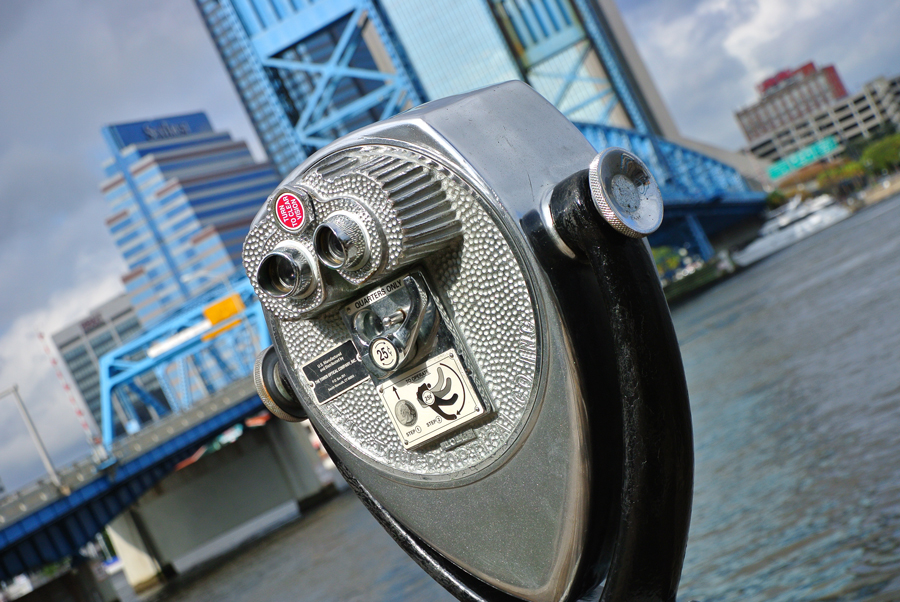
Nikon V1 | Nikon 1-Nikkor 10-100 VR PD-Zoom @ 31mm | 1/640th sec (mechanical shutter) | f/5.3 | ISO-100 | JPEG straight from camera

Nikon V1 | Nikon 1-Nikkor 10-100 VR PD-Zoom @71.2mm | 1/200th sec (mechanical shutter) | f/5.6 | ISO-100 | JPEG straghit from camera
NOTE: DR figures according to DxO Labs. DxOMark sensor measurement comparisons (Nikon V1 vs. Olympus PEN EP-3) can be found here.
b. ISO latitude/Signal-to-noise ratio
Native ISO is a decent 100-3200 with an expandable range to Hi-1 (ISO equivalent of 6400). The CX format sensor does a great job of controlling noise, considering its size. I’ve found the V1 totally usable up-to ISO-1600 and with good post-production skills, well beyond ISO-1600. This is due to the quality of noise and the fact that the CX sensor retains good detail at high ISOs. This is impart due to its good DR at high-ISO when shooting in RAW. The CX sensor is also surprisingly decent at ISO-6400, too. This one stop advantage in expandable latitude does come in handy, especially with the slower zoom lenses. The quality of noise is especially important to this discussion; the CX format sensor does have a decent amount of “noise” at high ISOs, but it’s the quality of noise that makes it easy to use in a good post-production workflow. At high ISOs, the CX sensor displays more luminance noise and very little chroma noise. This helps retain detail and keeps the images more usable at high ISO ranges. Chroma noise is very well controlled at all ISO levels, including the extended range. Because the noise characteristics include mostly luminance noise, post-production de-noising can be achieved. Depending on your technique and tools used, a lot of detail can be retained. This CX format sensor retains more detail at high ISO vs. the Olympus PEN EP-3, as we will see later in this article.
ISO Sensitivity:
- ISO 100-3200 in steps of 1 EV. Can also be set to approx. 1 EV (ISO 6400 equivalent ) above ISO 3200 ; auto ISO sensitivity control (ISO 100-3200, 100-800, 100-400 ) available
Nikon V1 Signal-to-Noise ratio (SnR 18%):
- ISO-100 • 36dB
- ISO-400 • 31dB
- ISO-800 • 27.5dB
- ISO-1600 • 25dB
- ISO-3200 • 22dB
- ISO-6400 • 19dB
The images below were all taken at high-ISO. Notice how there is ZERO noise in the blacks, even at ISO-3200. (JPEG straight from the camera):

Nikon V1 | Nikon 1-Nikkor 10mm f/2.8 pancake | 1/100th sec (mechanical shutter) | f/2.8 | ISO-1100 | JPEG straight from camera
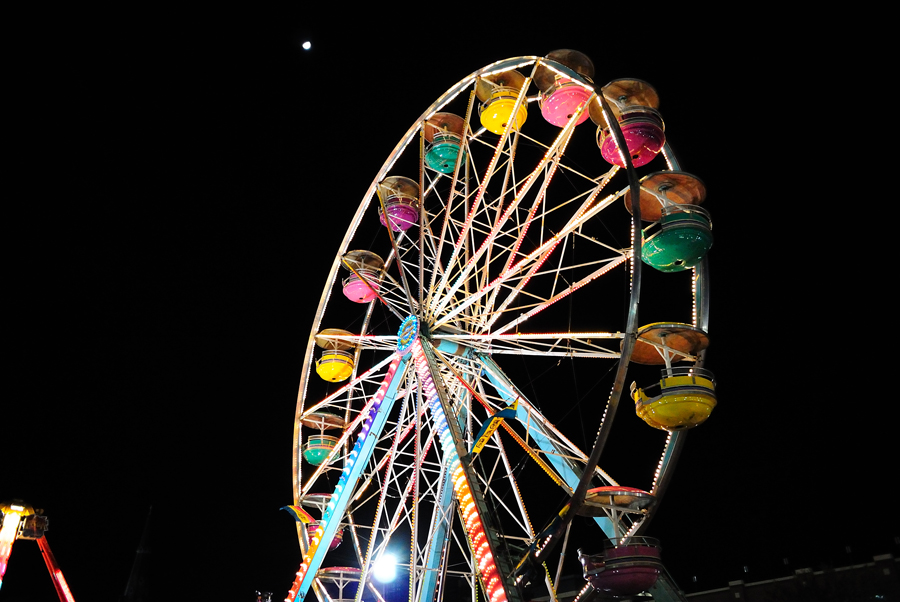
Nikon V1 | Nikon 1-Nikkor 10mm f/2.8 pancake | 1/100th sec (mechanical shutter) | f/2.8 | ISO-2000 | JPEG straight from camera
NOTE: SnR figures according to DxO Labs. DxOMark sensor measurement comparisons (Nikon V1 vs. Olympus PEN EP-3) can be found here.
c. Saturation (Color Sensitivity)
Color sensitivity is good at base ISO and holds on throughout the native ISO range in a very linear fashion. Nothing to be too concerned about in this dept.
Nikon V1 Color Sensitivity:
- ISO-100 • 21.3 bits
- ISO-400 • 18.7 bits
- ISO-800 • 17 bits
- ISO-1600 • 15.7 bits
- ISO-3200 • 14.3 bits
- ISO-6400 • 12.6 bits
NOTE: Color Sensitivity figures according to DxO Labs. DxOMark sensor measurement comparisons (Nikon V1 vs. Olympus PEN EP-3) can be found here.
d. Resolution
The CX format sensor is 10.1 megapixels (3872 x 2592), which is plenty of resolution for the Nikon 1’s target market and a great compromise in resolution for Image Quality (IQ). Any more resolution on this 2.7x crop sensor (13.2mm x 8.8mm) and IQ would be seriously compromised. Nikon has a long history of designing sensors with a good mix of resolution and IQ and the new CX format sensor is no different. Nikon has proven that they won’t design a sensor with more pixel density if that extra resolution comes at the cost of lower IQ. If Nikon increases resolution, it’s because they could do it without sacrificing IQ, or they could achieve higher resolution and higher IQ. The latter being Nikon’s usual modus operandi.
Image Sizes / Recording Rates:
 Still images • (still image and Smart Photo Selector modes, aspect ratio 3 : 2): 3,872 x 2,592 | 2,896 x 1,944 | 1,936 x 1,296
Still images • (still image and Smart Photo Selector modes, aspect ratio 3 : 2): 3,872 x 2,592 | 2,896 x 1,944 | 1,936 x 1,296 Still images • (movie mode, aspect ratio 16 : 9): 3,840 x 2,160 (1080/60i) | 1,920 x 1,080 (1080/30p) | 1,280 x 720 (720/60p)
Still images • (movie mode, aspect ratio 16 : 9): 3,840 x 2,160 (1080/60i) | 1,920 x 1,080 (1080/30p) | 1,280 x 720 (720/60p)![icon 04 The Nikon 1 system: A [NR] hands on review by Cary Jordan](data:image/svg+xml;base64,PHN2ZyB4bWxucz0iaHR0cDovL3d3dy53My5vcmcvMjAwMC9zdmciIHdpZHRoPSIxNyIgaGVpZ2h0PSIxNyIgdmlld0JveD0iMCAwIDE3IDE3Ij48cmVjdCB3aWR0aD0iMTAwJSIgaGVpZ2h0PSIxMDAlIiBmaWxsPSIjY2ZkNGRiIi8+PC9zdmc+) Still images • (Motion Snapshot mode, aspect ratio 16 : 9): 3,840 x 2,160
Still images • (Motion Snapshot mode, aspect ratio 16 : 9): 3,840 x 2,160 HD movies • 1,920 x 1,080/60i (59.94 fields/s *), 1,920 x 1,080/30p (29.97 fps) | 1,280 x 720/60p (59.94 fps)
HD movies • 1,920 x 1,080/60i (59.94 fields/s *), 1,920 x 1,080/30p (29.97 fps) | 1,280 x 720/60p (59.94 fps) Slow-motion movies • 640 x 240/400 fps (plays at 30p/29.97 fps) | 320 x 120/1,200 fps (plays at 30p/29.97 fps)
Slow-motion movies • 640 x 240/400 fps (plays at 30p/29.97 fps) | 320 x 120/1,200 fps (plays at 30p/29.97 fps) Movies recorded in still image mode • 1,072 x 720/60p(59.94fps)
Movies recorded in still image mode • 1,072 x 720/60p(59.94fps)![icon 04 The Nikon 1 system: A [NR] hands on review by Cary Jordan](data:image/svg+xml;base64,PHN2ZyB4bWxucz0iaHR0cDovL3d3dy53My5vcmcvMjAwMC9zdmciIHdpZHRoPSIxNyIgaGVpZ2h0PSIxNyIgdmlld0JveD0iMCAwIDE3IDE3Ij48cmVjdCB3aWR0aD0iMTAwJSIgaGVpZ2h0PSIxMDAlIiBmaWxsPSIjY2ZkNGRiIi8+PC9zdmc+) Motion Snapshot • 1,920 x 1,080/60p(59.94fps)(plays at 24p/23.976fps)
Motion Snapshot • 1,920 x 1,080/60p(59.94fps)(plays at 24p/23.976fps)
e. Electronic Shutter Still Photography Artifacts (rolling shutter)
The Nikon 1’s CX format sensor displays very small amounts of rolling shutter artifacts in the electronic shutter mode (see shots below). There is also a slight hint of rolling shutter in 1080/30p video mode. More on rolling shutter artifacts in video usage below, in the “f. Video Quality” section.
The Images below show very little signs of rolling shutter artifacts. These were captured in Electronic Shutter mode. (JPEG straight from camera):
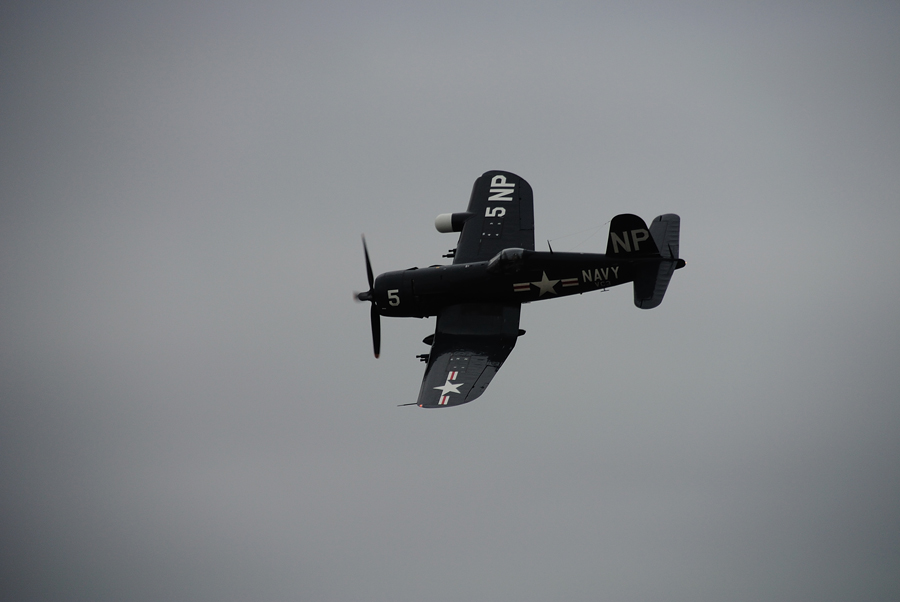
Nikon V1 | Nikon 1-Nikkor 10-100 VR PD-Zoom @100mm | 1/640th sec (electronic shutter) | f/5.6 | ISO-100 | JPEG straight from camera
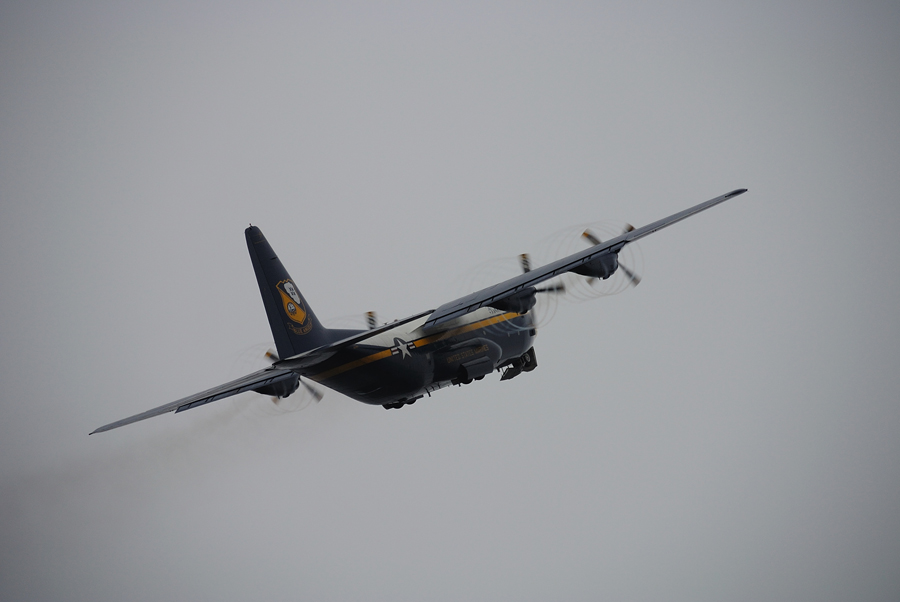
Nikon V1 | Nikon 1-Nikkor 10-100 VR PD-Zoom @100mm | 1/400th sec (electronic shutter) | f/5.6 | ISO-100 | JPEG straight from camera
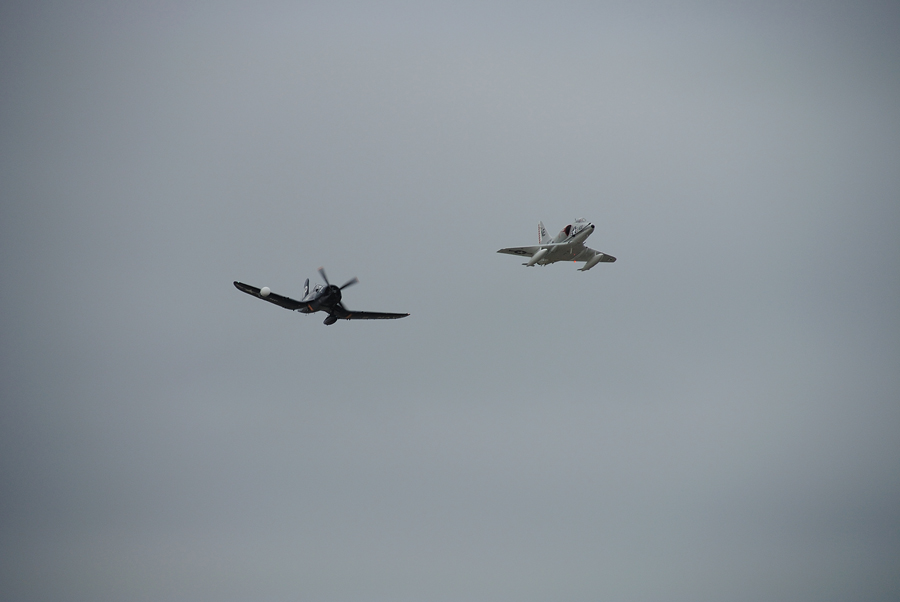
Nikon V1 | Nikon 1-Nikkor 10-100mm f/4.5-5.6 PD-Zoom @100mm | 1/500th sec (electronic shutter) | f/5.6 | ISO-100 | JPEG straight from camera
f. Video Quality
The Nikon 1’s video output is phenomenal. There is NO detectable rolling shutter artifacts in 1080/60i or 720/60p. There is a slight hint of rolling shutter @ 1080/30p, but it’s almost non-existent. In my original testing, I didn’t detect it. It was only when I put the V1 through a series of stress tests, did I actually see it and even then it’s barely visible. You have to be panning at an insane rate to even bring this artifact out. Only in these nasty stress tests did it show up. You’ll never see the rolling shutter artifacts, unless you’re intentionally trying to find it with extremely fast panning. Again, normal shooting will not display any rolling shutter. If the V1 had a 1080/24p video option, the rolling shutter would be slightly more visible, but still very controlled. I can tell you this, whatever Nikon has done with this sensor, it’s really working in the video dept – this is by far the best video output of any Nikon to-date. My only complaint is the omission of 1080/24p. I really appreciate 24fps as this is the most cinematic frame rate. Now, I doubt many people will be using the V1 to shoot indie films, but who knows. The video output is pretty amazing. The other issue I have with the V1’s video is lack of shallow DoF (Depth of Field). Once very fast CX format primes (f.95-f/1.4) to market and the FT-1 f-mount adapter is available, the DoF issues should be less of an issue.
g. VR (Vibration Reduction)
As with all modern Nikon lenses, Vibration Reduction is handled in the lens, not the body. Because of this, each lens has its own VR characteristics, dependent on the lenses main use. All of the lenses tested had great VR. The VR on these lenses are very impressive, even when compared to their larger DSLR lens siblings. The Nikon V1 offers two VR modes:
- Normal
- Active
h. Known sensor info
This is what we currently know about the CX format sensor:
- Designed by Nikon
- Manufactured by Aptina Imaging Corporation
- 12.0 total megapixels, 10.1 effective megapixels
- Pixel Pitch of 3.4 µm
- Sensor size of 0.62″ (diameter)
- CMOS
- 2.7x focal multiplier
- Includes a dust reduction system
Sample image below was edited from a V1’s RAW file:
Nikon 1-Nikkor 10mm f/2.8 pancake prime lens
Build Quality
The Nikon 1-Nikkor 10mm f/2.8 pancake lens ($246.95) is very small and light. It feels like it’s made mostly of metal, with very little plastic, if any at all. It’s a very solid little lens. It’s built very well and is probably the most durable lens in the current Nikon 1 line-up.
Specifications:
- Mount • Nikon 1
- Maximum Aperture • f/2.8
- Minimum Aperture • f/11
- Lens Elements/Groups • 6 /5
- Optical Conversion Factor • 2.7x
- Format • CX
- Maximum Angle of View • 77°
- VR (Vibration Reduction) • No
- Diaphragm Blades • 7 (rounded diaphragm opening)
- Aspherical Elements • 2
- Auto-Focus • Yes
- Minimum Focus Distance • 0.66ft.(0.2m)
- Filter Size • 40.5mm
- Dimensions • (Approx.) 2.2×0.9 in. (Diameter x Length) 55.5×22 mm (Diameter x Length
- Weight • (Approx.) 2.8 oz. (77g)
- Supplied Accessories • LC-N40.5 Snap-on Front Lens Cap, LF-N1000 Rear Lens Cap
- Price • $246.95
Image Quality
a. Sharpness
The Nikon 1-Nikkor 10mm f/2.8 pancake is very sharp, even wide-open (@ f/2.8). Image sharpness is not a problem with this lens, regardless of aperture. The lens does sharpen up nicely as you stop it down.
Sample images below are examples of Nikon’s 1-Nikkor 10mm f/2.8 pancake lens (JPEG straight from camera):

Nikon V1 | Nikon 1-Nikkor 10mm f/2.8 pancake | 1/60th sec (mechanical shutter) | f/2.8 | ISO-360 | JPEG straight from camera

Nikon V1 | Nikon 1-Nikkor 10mm f/2.8 pancake | 1/60th sec (mechanical shutter) | f/5 | ISO-360 | JPEG straight from camera
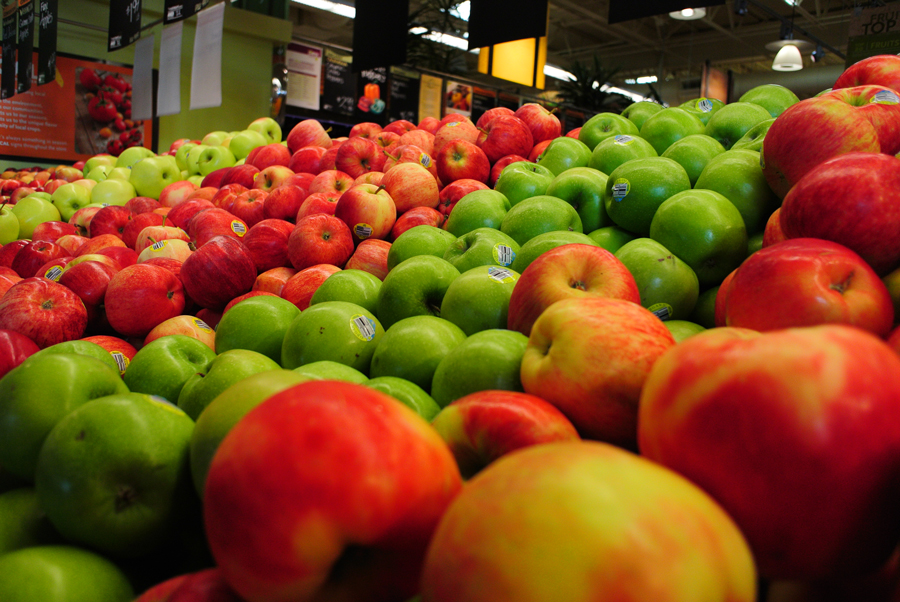
Nikon V1 | Nikon 1-Nikkor 10mm f/2.8 pancake | 1/125th sec (mechanical shutter) | f/2.8 | ISO-140 | JPEG straight from camera
b.Vignetting
There is hardly any visible vignetting with the 10mm f/2.8 pancake, even at f/2.8.
c. Minimum Focus Distance
The 1-Nikkor 10mm f/2.8 has a good minimum focus distance of just over 6 inches.
d. Contrast/Ghosting/Flaring/Aberrations
- Contrast • Very good contrast, even when shot wide-open.
- Ghosting/Flaring • The 10mm pancake controls ghosting and flare very well, even when shot directly into the sun
- Lateral Chromatic Aberration • Very well controlled
- Coma Aberration • This lens is terribly susceptible to Coma Aberrations. These show up as “halos” around bright sources of light, especially in the corners of the frame.
- LoCa (Longitudinal Chromatic Aberration) • Because the 10m f/2.8 doesn’t have a lot of shallow DoF, there is very little LoCa. Only a slight hint of LoCa at close focus distance.
e. Auto Focus
As with all of the current Nikon 1 lenses, the 10mm f/2.8 is super fast and deadly accurate.
f. Bokeh
Bokeh is totally subjective, but because this lens is in the Wide Angle category, the DoF is very deep. The only way you’re going to really see enough bokeh to judge the quality is at close focus distance @ f/2.8. With that said, I find the bokeh to be pleasing, all things considered.
Sample image below was edited from a V1 RAW file:
Nikon 1-Nikkor 10-30mm VR 10-30mm f/3.5-5.6 zoom
Build Quality
The 10-30mm VR zoom (part of the Nikon 1 V1 kit) is also a very small lens, but not as small as the 10mm f/2.8 pancake. The lens barrel stays tucked away in the body of the lens until you’re ready to shoot. At this time, you push a button on the side of the zoom ring and twist the zoom ring, revealing the lens’ extended position. This is a great feature and really cuts down on size. The lens is mostly made of plastic, but is still very durable. It features a finish very similar to the finish on the dark graphite colored Nikon V1.
Specifications:
- Mount • Nikon 1
- Maximum Aperture • f/3.5
- Minimum Aperture • f/16
- Lens Elements/Groups • 12/9
- Optical Conversion Factor • 2.7x
- Format • CX
- Maximum Angle of View • 77°
- Minimum Angle of View • 29°40”
- VR (Vibration Reduction) • Yes
- Diaphragm Blades • 7 (rounded diaphragm opening)
- Aspherical Elements • 3
- Auto-Focus • Yes
- Minimum Focus Distance • 0.66ft.(0.2m)
- Filter Size • 40.5mm
- Lens Barrel Retraction Function • Rotation of zoom ring
- Dimensions • (Approx.) 2.3×1.7 in. (Diameter x Length) 57.5×42 mm (Diameter x Length)
- Weight • (Approx.) 4.1 oz. (115g)
- Supplied Accessories • LC-N40.5 Snap-on Front Lens Cap, LF-N1000 Rear Lens Cap
- Price • included in the Nikon V1 kit for $846.95
Image Quality
a. Sharpness
Like its smaller brother, the Nikon 1-Nikkor 10-30mm f/3.5-5.6 is very sharp, even wide-open. Nikon has done a great job with image sharpness on all of the current 1-Nikkor lenses. And of course, this lens gets sharper as you stop it down, but not by much as the max aperture is already not very wide, especially on the long end (f/5.6) and the lens is already decently sharp wide-open.
b.Vignetting
- 10mm • Mild vignetting
- 30mm • No visible vignetting
c. Minimum Focus Distance
The 10-30mm kit lens has the same minimum focus distance as the 10mm f/2.8 pancake, 0.66ft.(0.2m)
d. Contrast/Ghosting/Flaring/Aberrations
- Contrast • Very good contrast, even when shot wide-open.
- Ghosting/Flaring • The 10-30mm VR f/3.5-5.6 zoom controls ghosting and flare very well, even when shot directly into the sun. The only time you’ll need to be careful is when the sun or a bright source of light is just outside the frame. Loss of contrast, ghosting and flaring can occur.
- Lateral Chromatic Aberration • Very well controlled
- Coma Aberration • This is better at controlling Coma Aberrations than the 10mm f/2.8. These show up as “halos” around bright sources of light, especially in the corners of the frame.
- LoCa (Longitudinal Chromatic Aberration) • Only a slight hint of LoCa at close focus distance.
e. Auto Focus
Auto focus is still very fast, but maybe just a hair slower than the 10mm f/2.8. The 1-Nikkor 10-30mm f/2.5-5.6 is just as accurate as the 10mm f/2.8.
f. Bokeh
On the long end, the 10-30mm kit lens does have decent bokeh. Close focus distances @ 30mm wide-open is about the only way you’ll ever get to see a decent amount of bokeh. This is due to the CX format sensor’s deep DoF, especially when using slow kit lenses like the 10-30mm.
Sample image below was edited from a V1 RAW file:

Nikon 1 V1 | Nikon 1-Nikkor VR 10-30mm f/3.5-5.6 @ 10mm | 1/160th sec | f/8 | ISO-100 | edited from RAW
Nikon 1-Nikkor VR 10-100mm f/4.5-5.6 PD-ZOOM
Build Quality
The Nikon 1-Nikkor 10-100mm f/4.5-5.6 PD-ZOOM ($746.95) is built very similar to a DSLR zoom lens. It’s actually quite large in comparison to the other lenses Nikon currently offers for the 1 system. Not only is it big, it’s also heavy. What this lens looses in size and weight, it gains in image quality and features. The PD-Zoom was mainly designed for video use, as it features a power zoom feature that’s a first of its kind for Nikon. The power zoom feature is very smooth and totally silent, as is the focus motor. This is due to Nikon’s use of a voice coil AF motor (VCM). VR operation is also totally silent. When powered off, the lens stays retracted into the lens barrel. Once the camera is powered on, the lens extends from the barrel almost 1.25 inches. The lens comes with a petal shaped bayonet type lens hood that does a good job of blocking stray light. The PD-ZOOM features electronic zoom controls on the left-side of the lens barrel. The zoom system has 3 speeds that are easily controlled by the touch of the controls. The lens also features a lock feature that keeps the lens in the extended position when the camera is powered off. This is useful because the lens/camera takes 4 full seconds to extend and come on-line before you can shoot a single picture.
Build quality/ergonomic issues I’ve found with the Nikon 1-Nikkor VR 10-100mm f/4.5-5.6 PD-ZOOM:
- Size. While the PD-ZOOM is a really cool and useful lens, it would of been nice to make it a little smaller.
- Time it takes to extend/retract. As mentioned above, it takes almost 4 full seconds to extend the lens and start shooting – at least Nikon was thoughtful enough to give us a lock feature.
- The zoom controls on the left side of the lens barrel are positioned wrong for view finder shooting. They are positioned way too high towards the top of the lens barrel. This puts my left hand/wrist in a very uncomfortable position when shooting through the EVF. These controls need to be moved about 15-20° lower. The only way to shoot with this configuration is to flip my left hand around to the “novice” position (instead of cradling the lens in my palm, cradling it with my thumb with my fingers on top of the lens and my pinkie extended towards the front of the lens). Some of you might already shoot like this and that’s OK, but proper and proven technique is to cradle the lens in your palm; you get much more stability using this technique.
Specifications:
- Mount • Nikon 1
- Maximum Aperture • f/4.5
- Minimum Aperture • f/16
- Lens Elements/Groups • 21/14
- Optical Conversion Factor • 2.7x
- Format • CX
- Maximum Angle of View • 77°
- Minimum Angle of View • 9°10”
- VR (Vibration Reduction) • Yes
- Diaphragm Blades • 7 (rounded diaphragm opening)
- Aspherical Elements • 2
- ED Glass Elements • 3
- Auto-Focus • Yes
- Minimum Focus Distance • 1.0ft. (0.3m) (at 10mm focal length), 2.8 ft (0.85m) (at 100 mm focal length)
- Filter Size • 72mm
- Lens Barrel Retraction Function • Yes (performed by DCM motor built into the lens based on power status information received from the camera body)
- Dimensions • (Approx.) 3.0×3.7 in. (Diameter x Length) 77×95 mm (Diameter x Length)
- Weight • (Approx.) 18.2 oz. (515g)
- Supplied Accessories • LC-N72 Snap-on Front Lens Cap, LF-N1000 Rear Lens Cap, HB-N102 Bayonet Lens Hood
- Price • $746.95
Image Quality
a. Sharpness
The Nikon 1-Nikkor 10-100mm f/4.5-5.6 PD-ZOOM is extremely sharp at all apertures and focal lengths. This lens is a really good performer in the sharpness dept.
Sample images below showcase the Nikon 1-Nikkor VR 10-100mm f/4.5-5.6 PD-ZOOM’s sharpness (JPEG straight from camera):
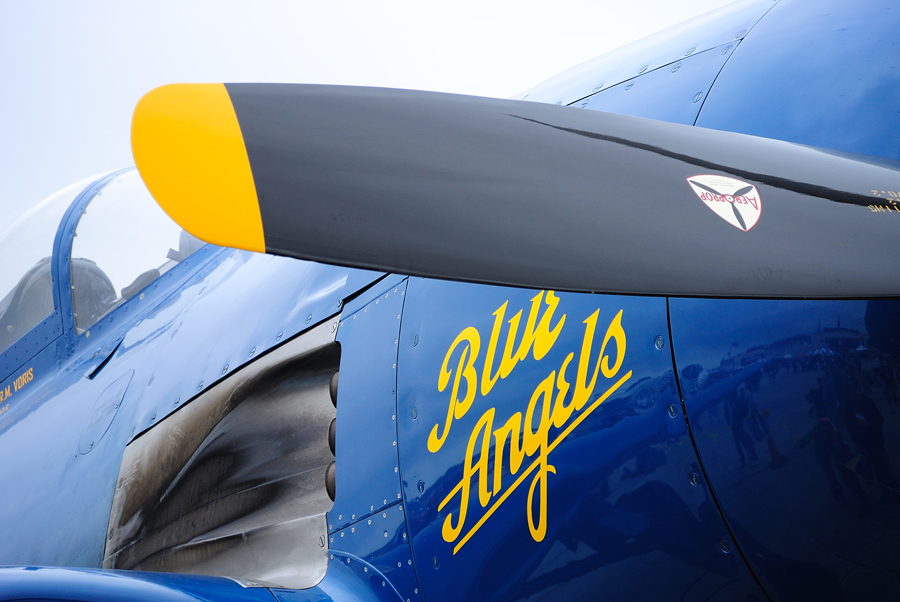
Nikon V1 | Nikon 1-Nikkor 10-100 VR PD-Zoom @52.8mm | 1/160th sec (mechanical shutter) | f/5.6 | ISO-100 | JPEG straight from camera
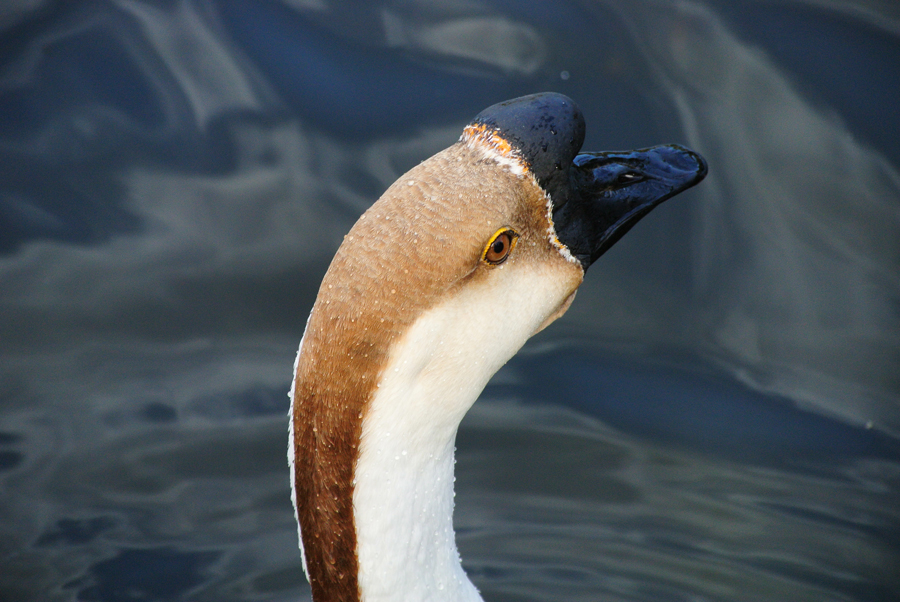
Nikon V1 | Nikon 1-Nikkor 10-100 VR PD-Zoom @ 100mm | 1/250th sec (mechanical shutter) | f/5.6 | ISO-280 | JPEG straight from camera

Nikon V1 | Nikon 1-Nikkor 10-100mm f/4.5-5.6 PD-Zoom @100 | 1/250th sec (mechanical shutter) | f/5.6 | ISO-320 | JPEG straight from camera
b.Vignetting
There is a significant amount if visible vignetting. When takings shots of aircraft at an airshow, the vignetting was very noticeable. Shooting planes in the sky is the worst case scenario for showing vignette. Vignetting will not show up as strong in normal photography.
c. Minimum Focus Distance
1.0ft. (0.3m) (at 10mm focal length), 2.8 ft (0.85m) (at 100 mm focal length)
d. Contrast/Ghosting/Flaring/Aberrations
- Contrast • Very good contrast, even when shot wide-open.
- Ghosting/Flaring • The 10-100mm f/4.5-5.6 PD- ZOOM controls ghosting and flare very well, even when shot directly into the sun. The only time you’ll need to be careful is when the sun or a bright source of light is just outside the frame. Loss of contrast, ghosting and flaring will occur at certain focal lengths.
- Lateral Chromatic Aberration • Very well controlled
- Coma Aberration • Very little, only at the wide end.
- LoCa (Longitudinal Chromatic Aberration) • No significant LoCa detected
An example of the 10-100mm VR f/4.5-5.6 PD-ZOOM’s flare control when the sun is directly in the frame (JPEG straight from camera):
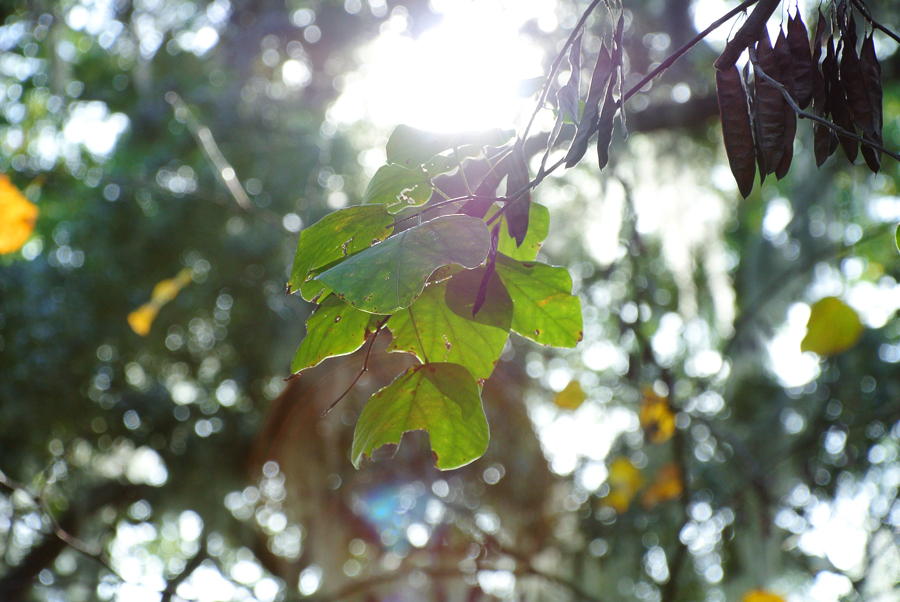
Nikon V1 | Nikon 1-Nikkor 10-100 VR PD-Zoom @ 43.8mm | 1/125th sec (mechanical shutter) | f/5.6 | ISO-200 | JPEG straight from camera
An example of the 10-100mm VR f/4.5-5.6 PD-Zoom’s flare control with the sun just out of the frame @ 100mm (JPEG straight from camera):
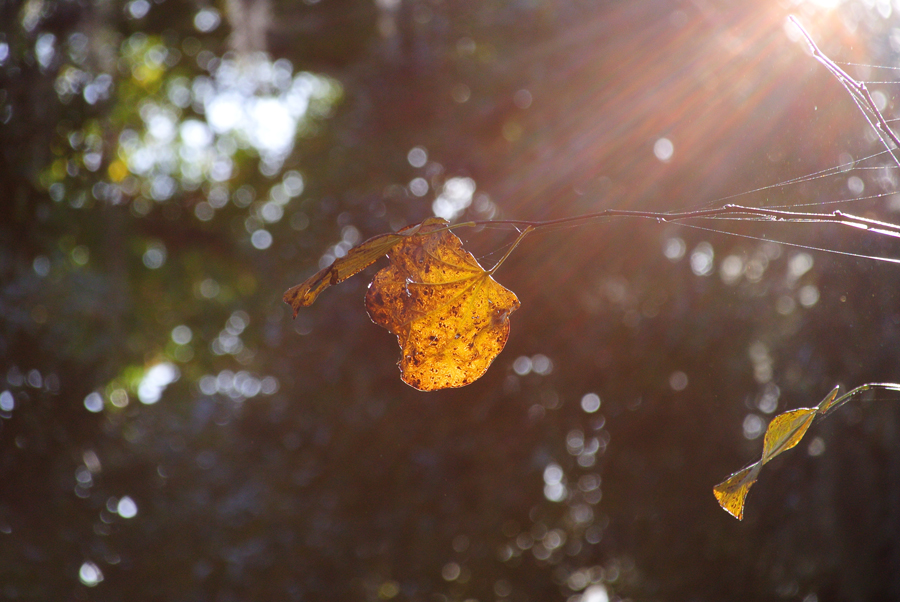
Nikon V1 | Nikon 1-Nikkor 10-100 VR PD-Zoom @ 100mm | 1/250th sec (mechanical shutter) | f/5.6 | ISO-200 | JPEG straight from camera
An example of the 10-100mm VR f/4.5-5.6 PD-ZOOM’s flare control with the sun even further outside of the frame (JPEG straight from camera):

Nikon V1 | Nikon 1-Nikkor 10-100 VR PD-Zoom @ 100mm | 1/250th sec (mechanical shutter) | f/5.6 | ISO-360 | JPEG straight from camera
e. Auto Focus
Auto focus is extremely fast and accurate. It’s up there with the 10mm f/2.8 pancake, maybe even slightly faster.
f. Bokeh
Bokeh is very neutral and actually very smooth, especially at 100mm and close focus distances. Even with a 2.7x crop factor and the deep DoF that provides, you can still manage to blur the background of your subjects with this lens @ 100mm, shot wide-open. “Cream Machine” this is not, but it’s respectable for the CX format. Once Nikon releases some faster aperture lenses, we will start to see deep DoF issues become less of an issue. The FT-1 f-mount lens adapter will also lessen this issue when used with a fast 50mm f/1.4 or 85mm f/1.4.
g. Distortion
I didn’t list distortion on any of the other lenses, because there wasn’t enough to really discuss. But, the 10-100mm PD-ZOOM has a healthy amount of pincushion distortion, especially on the long end. This is easily correctable in post-production for still images, but not so easy for video footage. This is not a huge deal, but something you should know about.
Sample image below was edited from a V1’s RAW file:
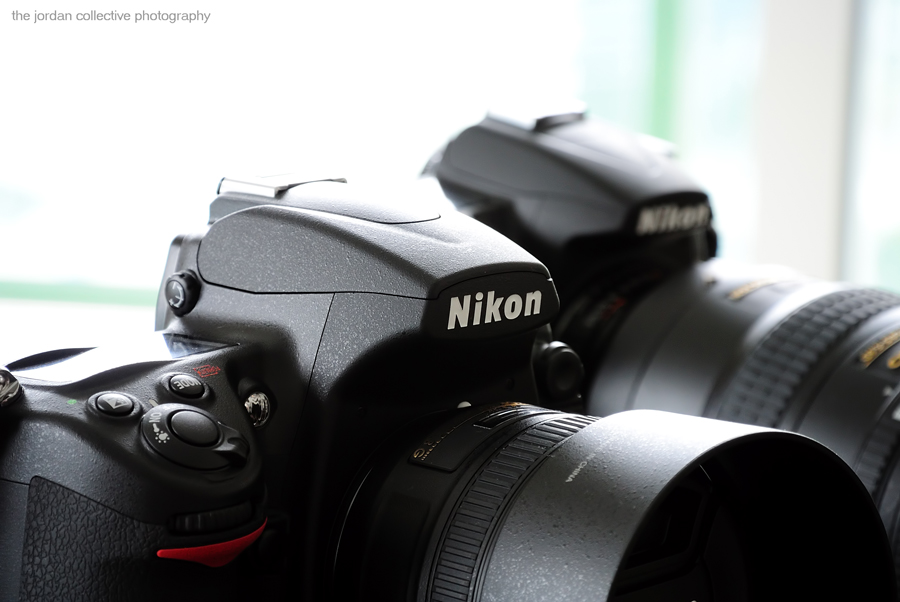
Nikon 1 V1 | Nikon 1-Nikkor VR 10-100mm f/4.5-5.6 PD-ZOOM @52.8mm | 1/40th sec | f/5.6 | ISO-400 | edited from RAW
Some additional Nikon 1 samples are available on flickr:
B&H currently has up to $150 instant savings on selected Nikon 1 system cameras (valid till December 31st, 2011).

